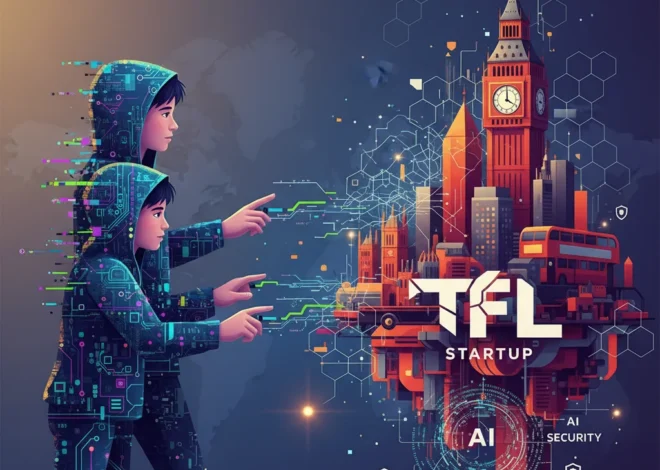
Decoding the Tech Rebound: Why the Fed’s Next Move Could Unleash a New Wave of Innovation
If you’ve been keeping a close eye on the stock market, you’ve probably noticed a renewed sense of optimism bubbling up in the tech sector. After a challenging period of corrections and uncertainty, the Nasdaq has been flashing green, and it seems like the tech world is collectively holding its breath. But this isn’t just random market noise. The recent surge is directly tied to whispers coming from the world of high finance, specifically the U.S. Federal Reserve.
According to a recent report from the Financial Times, investors are increasingly betting on the Fed to cut interest rates as early as December. This glimmer of hope has been enough to send a jolt of energy through tech stocks, which are notoriously sensitive to interest rate policies. But what does a potential rate cut actually mean for the sprawling ecosystem of tech—from the developer writing code for a new software product to the entrepreneur pitching their next big idea?
In this deep dive, we’ll unpack the intricate dance between monetary policy and technological innovation. We’ll explore why interest rates have such a profound impact on the tech sector, how the AI boom is supercharging this rebound, and what it all means for you, whether you’re a programmer, a startup founder, or simply a tech enthusiast trying to make sense of the future.
The Macro-Economic Levers: Why the Fed Holds the Keys to Tech’s Kingdom
To understand why a potential rate cut is such a big deal, we need a quick primer on “the cost of money.” When the Federal Reserve raises interest rates, it’s essentially making it more expensive for everyone—from individuals to massive corporations—to borrow money. This is done to cool down an overheating economy and fight inflation. For the past couple of years, this has been the dominant economic story.
This high-rate environment disproportionately affects the tech industry for two key reasons:
- Valuation Mathematics: Many tech companies, especially high-growth startups and those in the SaaS space, are valued based on their *future* earnings potential. When interest rates are high, the value of those future dollars is “discounted” more heavily, making the company’s present-day valuation lower. Conversely, when rates fall, those future profits become more valuable today, boosting stock prices.
- The Cost of Innovation: Groundbreaking tech requires massive upfront investment in research and development. Think of the billions being poured into artificial intelligence and machine learning. Much of this is funded by debt or venture capital. When borrowing is expensive, companies become more cautious, R&D budgets can get slashed, and speculative “moonshot” projects are often the first to go.
The recent optimism stems from signs that inflation is finally cooling. For instance, recent Consumer Price Index (CPI) reports have shown a moderating trend, giving the Fed more room to consider easing its tight monetary policy. This prospect of “cheaper money” in the near future is what’s fueling the current rally and allowing investors to dream of a return to a more growth-friendly environment.
Vinted's €8 Billion Gambit: The AI and Cloud Engine Behind a Fashion Revolution
The AI Anomaly: A Rebound Led by Titans
While the prospect of lower rates is lifting the broader tech market, it’s impossible to ignore the elephant in the room: the generative AI revolution. This isn’t just a rising tide lifting all boats; it’s a tidal wave lifting a fleet of state-of-the-art battleships while many smaller vessels are still navigating choppy waters.
The market’s recovery has been overwhelmingly powered by a handful of mega-cap tech companies, often dubbed the “Magnificent Seven.” These are the giants who are not only building the foundational models of AI but also providing the critical cloud infrastructure and hardware that the entire ecosystem runs on. Their performance has been so strong that it has, at times, masked underlying weakness in other parts of the tech sector.
Let’s look at how these key players have performed, demonstrating their outsized impact on the market.
| Company | Primary Role in the AI Ecosystem | Illustrative YTD Stock Performance |
|---|---|---|
| Nvidia | Dominant provider of GPUs for AI training | +195% |
| Microsoft | Major investor in OpenAI, Azure Cloud AI services | +55% |
| Alphabet (Google) | Developer of Gemini AI models, Google Cloud Platform | +50% |
| Amazon | AWS Cloud services, Bedrock AI platform | +75% |
| Meta | Llama open-source AI models, AI-driven advertising | +170% |
Note: The performance figures above are illustrative examples for a given period and are subject to constant market changes. For up-to-the-minute data, please consult a financial data provider.
This concentration of gains highlights a crucial point: the current rebound is as much about a specific technological paradigm shift—the mainstreaming of artificial intelligence—as it is about macroeconomic factors. The companies best positioned to capitalize on AI are being rewarded handsomely, creating a powerful feedback loop of investment and innovation.
But on the other arm of the ‘K’, many non-AI SaaS companies, B2B software firms, and early-stage startups are still facing a tough reality. Venture capital, while showing signs of life, is far more discerning than it was in 2021. The mantra has shifted from “growth at all costs” to “sustainable, profitable growth.” A Fed rate cut will certainly help these companies by lowering their cost of capital, but it won’t be a magic wand. The bar has been permanently raised. Founders now need to demonstrate not just a cool piece of tech but a clear path to profitability. The capital unlocked by easier monetary policy is likely to flow first and fastest to those who can prove they are building resilient, efficient businesses, especially in high-demand areas like cybersecurity and process automation.
What This Means for You: A Practical Guide for the Tech Ecosystem
Macroeconomic trends and stock charts can feel abstract. Let’s translate this market shift into actionable insights for different players in the tech world.
For Developers, Engineers, and Tech Professionals
A more optimistic market outlook is good news for job security and creation. As companies feel more confident about the future, R&D budgets expand, and hiring freezes begin to thaw. The demand for talent in high-impact fields will only intensify. If your skills align with AI, machine learning, data science, or cybersecurity, you are in an incredibly strong position. For those in programming, focusing on skills related to AI model integration, cloud-native development (Kubernetes, serverless), and data engineering will provide a significant career advantage. This rebound could signal a renewed “war for talent” in these key specializations.
The UK's Risky Gamble: Will Banning Ransomware Payments Save Us or Sink Us?
For Entrepreneurs and Startup Founders
The fundraising environment could be about to get a little warmer. A rate cut would signal a “risk-on” appetite among investors, making venture capitalists more willing to write checks. According to data from PitchBook, while VC funding has been depressed, there is still a massive amount of “dry powder” (capital waiting to be deployed). A more favorable economic outlook could be the catalyst that unlocks it.
However, as mentioned in the editor’s note, the game has changed. VCs will still demand strong unit economics and a clear path to profitability. If your startup leverages automation or AI to solve a clear business problem, your pitch will resonate strongly. The days of securing a multi-million dollar seed round with just a slide deck are likely over for good, but the funding is there for those who can demonstrate real value and a sustainable business model.
For Investors and Tech Enthusiasts
The key question is whether the AI-fueled rally has more room to run. While the mega-cap stocks have had an incredible year, the innovation they are driving is still in its early innings. The ripple effects will create new opportunities in second and third-tier companies—those building applications on top of the foundational models or providing specialized services for AI implementation. Look for companies that are applying AI in practical, industry-specific ways, from biotech to finance. Diversification remains crucial, as does a healthy dose of skepticism for the hype that inevitably surrounds any technological revolution.
The Road Ahead: Cautious Optimism
It’s important to remember that a December rate cut is not a certainty. The Federal Reserve’s decisions will be “data-dependent,” meaning they will be watching inflation and employment numbers like a hawk. Any unexpected spike in inflation could push their timeline back, which would undoubtedly pour some cold water on the market’s current enthusiasm.
Furthermore, geopolitical risks and other economic headwinds still exist. But for the first time in a long while, the prevailing narrative in the tech world is one of cautious optimism. The convergence of a potential monetary policy pivot and a once-in-a-generation technological shift in AI is creating a powerful current.
The connection between a central banker’s decision and the pace of technological innovation is real and profound. As the cost of capital potentially decreases, the cost of dreaming big goes down with it. For a sector built on bold bets and future promises, that could make all the difference.
From Racetrack to Railway: How Formula 1 AI is Fixing Your Terrible Train Wi-Fi
Ultimately, the recent tech stock rebound is more than just a number on a screen. It’s a reflection of renewed confidence in the future—a future that is being actively built, line by line of code, in the labs and garages of the global tech community. The months ahead will be critical, but the stage is set for what could be the next exciting chapter in technology’s relentless march forward.


